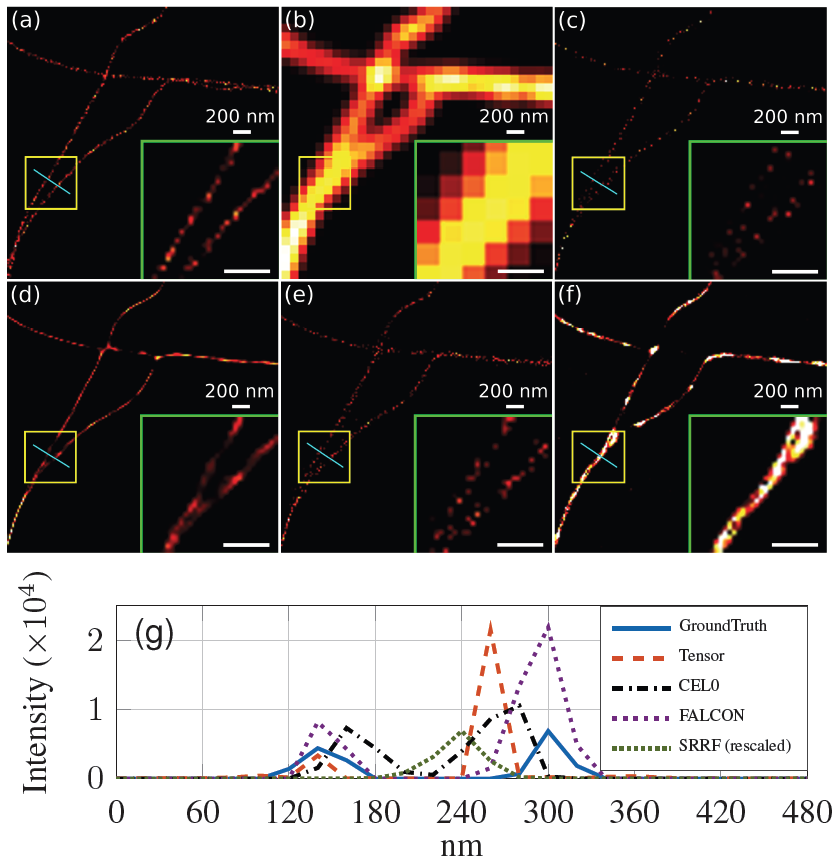Section: New Results
Biological Image Super-resolution Enhanced with Tensor
Participants : Jose Henrique de Morais Goulart, Laure Blanc-Féraud, Eric Debreuve, Sébastien Schaub.
This work is part of the BISET project, funded by the académie 1 RISE (Réseaux, Information et Société numErique) of Idex UCA JEDI.
Fluorescence microscopy imaging has numerous applications in biological sciences, but has limited resolution due to light diffraction. Recently proposed super-resolution techniques acquire an image time series at a high frame rate and exploit independent random fluorophore blinking for reconstruction. This approach holds great potential for observing live-cell sub-cellular phenomena, which is a challenging scenario with strict constraints over the deployed excitation levels and the acquisition time.
The BISET project aimed to develop tensor-based super-resolution fluorescence microscopy algorithms based on this approach. Assuming a known separable PSF , a third-order tensor model with two spatial diversities and one temporal diversity was proposed. The model unknowns are high-dimensional fluorophore spatial profiles along and directions and temporal fluorophore profiles modeling blinking. Our formulation employs a least-squares loss term and penalty functions promoting spatial profile sparsity (necessary for fluorophore locality) and temporal profile group sparsity (which controls the number of fluorophores).
The formulation is nonconvex but block-convex in the unknown profiles and thus can be solved by alternating minimization. It has a significantly smaller number of unknowns in comparison with a matrix-based convex one (with frames as columns), in consonance with the current trend of employing nonconvex formulations rather than overparameterized convex ones which are often too costly. However, its resolution is numerically challenging for high-density acquisitions. Indeed, even though the proposed algorithm is able to reveal the overall target structure in our simulations, it produces a “dotted” reconstruction. For comparison, we developed a matrix-based formulation with nonconvex group-sparsity regularization, which is more costly to solve but achieves better results. These findings were published in the IEEE CAMSAP 2019 conference [11], and were also presented on October 2019 in a GdR ISIS (Information, Signal, Image et Vision)/MIA (Mathématiques de l'Imagerie et de ses Applications)/ONDES meeting (Meeting webpage: http://www.gdr-isis.fr/index.php?page=reunion&idreunion=401 .) held in Paris and entitled "Co-conception: hybrid sensors and algorithms for innovative systems". An illustration of the results produced by the developed tensor and matrix methods is given in Figure 2, along with outcomes of other state-of-art methods. In conclusion, though our tensor approach is innovative and was shown to be promising, further research is needed to overcome the model estimation difficulties.
|



